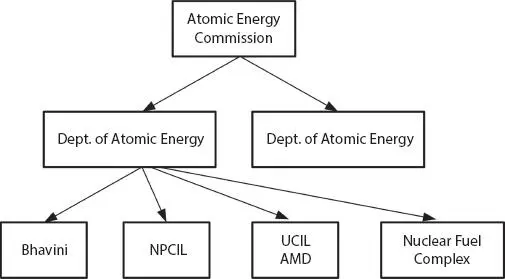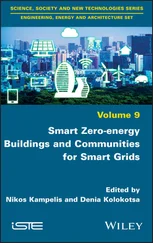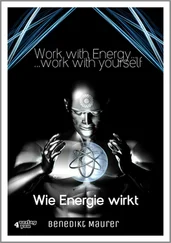Due to the given limitations on coal, natural gas plays an important role in India’s power sector. As compared to coal, its environmental impacts are comparatively less, which makes gas-based power generation more attractive [5].
2.3.1 Basics of Gas-Based Power Generation
Gas-based power plant is similar to a steam turbine power plant, with the only difference that, here, we use compressed high-pressure air to rotate the turbine. The schematic diagram of a typical gas turbine power plant is shown in Figure 2.3. It has three major parts:
1 Compressor
2 Combustor
3 Turbine
The air or natural gas is compressed in the compressor. The compressed air then passes through the combustor where the air is combusted to high temperature and high pressure. This high-pressure air is used to run the turbine, which, in turn, rotates the alternator to produce electricity. This is a simple cycle gas plant. In a combined cycle gas plant, the heat produced from combustion is used for industrial purposes through a heat recovery steam generator [6, 7].

Figure 2.3 A typical gas turbine power plant.
2.3.2 Major Gas-Based Power Plants in India
Out of 65 gas-based power plants in India, 7 major power plants are owned by NTPC and they are given below:
| S. no. |
Names |
Commissioned capacity (in MW) |
| 1 |
Anta |
419.33 |
| 2 |
Auraiya |
663.36 |
| 3 |
Kawas |
656.20 |
| 4 |
Dadri |
829.78 |
| 5 |
Thaner-Gandhar |
657.39 |
| 6 |
Rajiv Gandhi CPP Kayamkulam |
359.58 |
| 7 |
Faridabad |
431.59 |
India is the third largest producer and third largest consumer with an installed grid capacity of 370.106 GW as of 31 March 2020. Out of which 48,497 MW of power generation is contributed by gas-based power plants.
Advantages
As compared with the thermal power plant, it requires small land availability for the power plant setup.
The construction of a gas-based power plant is simpler.
Operational cost and the per-unit cost is low.
It offers black start facilities.
Burning of natural gases produces less pollutants like NOX and SOX.
Disadvantages
Efficiency is less.
Due to high temperature of the system, the lifetime of the power plant is reduced considerably.
The Government of India plans a new scheme to revive a 24,000-MW gas power plant. This proposed scheme hopes to help operate the power stations at 90% capacity by selling the bundled power output with solar energy [2].
Ever since nuclear power came into existence, it has led to various debates on disposal of its wastes and the detrimental effect of such wastes to the mankind. But, many of the nuclear power’s advantages are behind closed doors. It has emerged as one of those power-producing methods that produce considerably less amount of greenhouse gases. Enrico Fermi and his team were the people behind today’s nuclear power plants. Atoms have loads of energy in them. They only need to be explored by either fission or fusion. Nuclear power plants involve nuclear reactors that contain and control nuclear chain reactions. They also have fuel rods to feed reactors and moderators, control rods, coolants, etc., hope that showed a spotlight on nuclear power [8].
2.4.1 India’s Hold in Nuclear Power
It is a prominent fact that India stands third among the world’s consumers and producers of electricity. The nuclear plants deliver 6.7 GW of power. Of the total power produced in India, about 2% is produced from Nuclear power. When it comes to worldwide production, India takes 1.2% share, thereby standing at 15th position. India has also signed agreements and treaties with countries like France and Russia to empower and strengthen the nation’s nuclear power production [9]. As many plants have been planned and few are already under construction, the position of India and the contribution of India in nuclear power will ameliorate in the impending years. The structure of nuclear power is shown in Figure 2.4.
2.4.2 Major Nuclear Power Plants
There are seven nuclear power plants comprising of 22 nuclear reactors in total operating in India as of March 2018. Of all, Kudankulam Nuclear Power Plant located in Tamil Nadu has the highest capacity power plant with a capacity of 2,000 MW currently under operation and 2,000 MW under operation. It is also the only nuclear plant in India that has incorporated pressurized water reactors while others have boiling water reactors or pressurized heavy-water reactors. The given table gives insights about the major nuclear power plants in India [9].

Figure 2.4 Organization chart of nuclear power in India.
2.4.3 Currently Operational Nuclear Power Plants
| Power station |
State |
Total capacity (MW) |
| Kaiga |
Karnataka |
880 |
| Kakrapar |
Gujarat |
440 |
| Kudankulam |
Tamil Nadu |
2,000 |
| Madras (Kalpakkam) |
Tamil Nadu |
440 |
| Narora |
Uttar Pradesh |
440 |
| Rajasthan |
Rajasthan |
1,080 |
| Tarapur |
Maharashtra |
1,400 |
Advantages of Nuclear Power Plants
The culmination of nuclear power plant is due to its march ahead in reducing greenhouse gas emissions, thereby standing out as a safer way of producing power with less or almost nil release of polluting gases and refraining from contributing to global warming.
Yet another spotlight in nuclear power is the remarkably low fuel costs and minimal requirement of fuel.
Nuclear power plants being sustainable and possessing exceptional lifetime.
2.4.4 Challenges of Nuclear Power Plants
Despite having so many striking pros, the major drawback that blindfolds all of the advantages is the generation of radioactive wastes and challenges involved in its disposal. The disposal is expensive and the wastes are viable of producing ill-effects even after very long periods.
The harmful effects of nuclear wastes have led to lack of discernment from people and instilled their minds with negativity.
Commissioning of nuclear power plants and safety precautions involve huge costs.
Also, the nuclear plants have less adaptability and hence cannot immediately react to changes in the requirement of power.
2.5 Hydropower Generation
Hydropower generation is one of the oldest ways of power generation [10]. With an installed capacity of 4,600 MW (as per March 2020) which accounts for a total of 12.3% total installed capacity in India holds fifth place in terms of exploitable hydro-potential on the global scenario.
Traditionally, potential energy stored in dammed is converted into electrical energy. Based on the height of water, three types of turbines are used. It is capable of instant start. It can take the load at a rate of 20 MW/minute. Therefore, it can be used to meet out peak load periods.
Читать дальше














